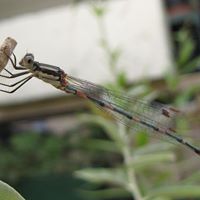Who patented the mimeograph?
The US patent 180,857 for Autographic Printing was received on August 8, 1876
The stencil duplicator or mimeograph machine (often abbreviated to mimeo) is a low-cost printing press that works by forcing ink through a stencil onto paper. The mimeograph process should not be confused with the spirit duplicator process.
Mimeographs, along with spirit duplicators and hectographs, were a common technology in printing small quantities, as in office work, classroom materials, and church bulletins. Early fanzines were printed with this technology, because it was widespread and cheap. In the late 1960s, mimeographs, spirit duplicators, and hectographs began to be gradually displaced by photocopying and offset printing.
Thomas Edison received US patent 180,857 for Autographic Printing on August 8, 1876. The patent covered the electric pen, used for making the stencil, and the flatbed duplicating press. In 1880 Edison obtained a further patent, US 224,665: "Method of Preparing Autographic Stencils for Printing," which covered the making of stencils using a file plate, a grooved metal plate on which the stencil was placed which perforated the stencil when written on with a blunt metal stylus.
The word mimeograph was first used by Albert Blake Dick when he licensed Edison's patents in 1887.











